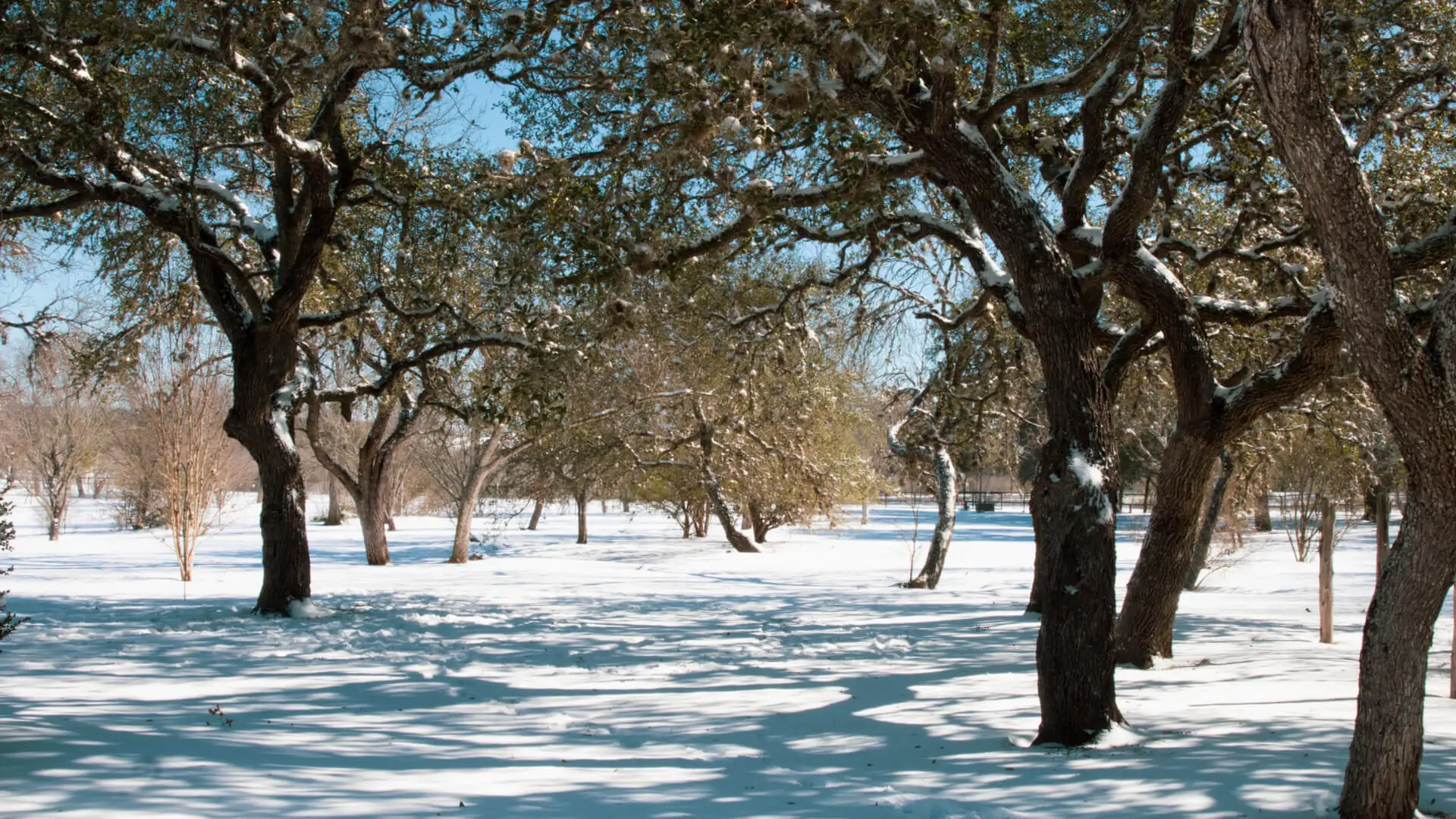Winterkill is impossible to avoid completely, but our CitiTurf experts have got a couple of tricks up their sleeve, as well as the requisite expertise to keep your lawn safe and sound this winter. But what problems should you expect?
According to our lawn technicians, most lawns that spend about a month (or more) blanketed in snow will see snow mold develop. Snow mold, which comes in the gray and pink varieties, emerges because the snow actually acts like a blanket for the soil and keeps it warm during the cold winter days. The difference in temperature is conducive to the appearance of snow mold, but you can prevent it if you make sure your lawn has been properly mowed by our experts before the arrival of winter. It also helps to have us dethatch, aerate the soil, remove the leaves and fix your water drainage systems if you want to make sure your lawn is completely dormant by wintertime. To boot, some types of grass will do better in winter than others, so if your lawn is prone to snow mold because of the local weather conditions, perhaps you should consider planting grasses that do better in cool weather and are more resistant. Rough bluegrass, creeping bentgrass, Kentucky bluegrass, colonial bentgrass, annual bluegrass, tall fescue, and red fescue, for instance, will put up with winter relatively well – while perennial ryegrass is susceptible to developing gray and pink snow mold more than other grasses.
The cold, dry, intense winds in winter can sometimes desiccate lawns; in plain English, the soil beneath your turf can go completely dry and infertile. CitiTurf recommends its very own fertilization treatment, applied routinely, during regular fall lawn care sessions. Fertilizers that are slowly released into the soil will help keep it humid enough for the winter and will also help the plants’ roots grow strong and ready for winter. You can also have snow fences installed around your property, to keep the wind from affecting your lawn and desiccating the soil.
Another winter-specific danger for lawns is ice – both its mere presence, as well as the authorities’ efforts to get rid of it. We, at CitiTurf, can have your drainage systems checked out and make sure the water is being drained thoroughly. Water that’s not being properly evacuated can end up forming puddles that freeze and cause damage to the turf; not to mention they are hazardous for those that happen to walk across the lawn. If ice is a recurring issue for you in winter, perhaps you should consider having a drainage system installed that will help the soil absorb the water. At the same time, if the salt used by municipality trucks to de-ice the roads reaches your property, you can see your turf wither away. Those salts can be toxic and will be easily absorbed into the soil, if swept unto your lawn, so if this is a problem where you live, choose to have a fence put in.
Finally, some property owners will see meadow voles shacking up underground, underneath the lawn, and feeding on the turf and its root system. In order to prevent their appearance, CitiTurf lawn care technicians will leave the lawn at least 2.5 inches tall for the last mow of the fall.
Ideally, you should call us in and leave our experts work their magic before the year’s first big snowfall. However, not all is lost if you don’t get around to doing this in good time – it certainly doesn’t mean your lawn is doomed for destruction. Simply call us in during spring, to help you with the damage control and lawn repair. Also, bear in mind that no lawn care method is 100 per cent guaranteed to work; however, regardless of nature’s unpredictable nature, expert lawn care services can certainly help your lawn fare better this winter.









Comments (0)
Thanks for your comment!
Thanks for your feedback! Your comments have been successfully submitted! Please note, all comments require admin approval prior to display.
Error submitting comment!
There is a problem with your comment, please see below and try again.